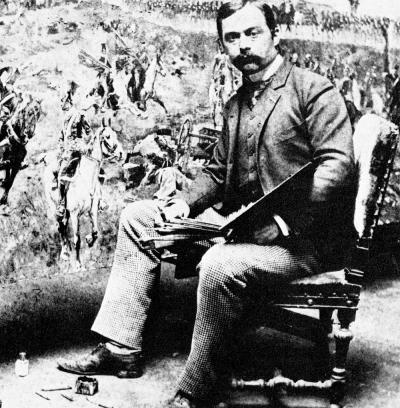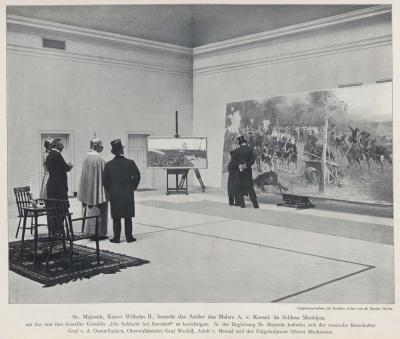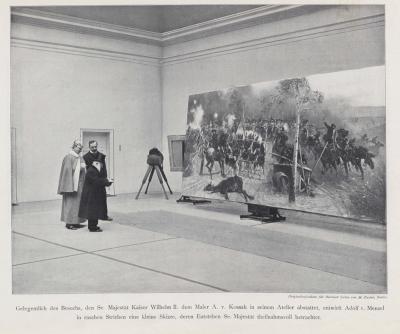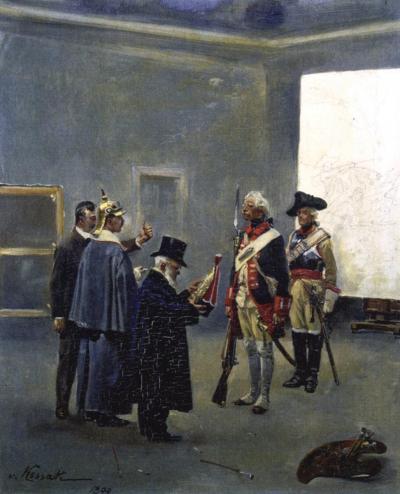Wojciech Kossak: The Battle of Zorndorf (1758), 1899
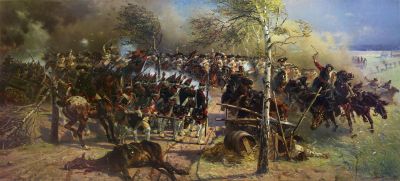
The Prussian Higher Regional Equerry, Georg Graf von Lehndorff, who had been the head of the regiment in recent years also visited the workshop, and subsequently Kossak wrote to his wife: “There entered a cold, stiff, old man who must have been at least ninety years old who, when he left, was full of enthusiasm, vibrant energy and congratulations. He said to me, this stiff Teutonic Knight, that he had never seen such a picture in which there was so much energy and life.” Władysław Stodolnicki, the author of the Polish weekly “Kraj“ that was published in St Petersburg (he was originally born in Lublin), also visited Kossak in his workshop on various occasions and wrote positively about the work of the Polish painter.
The favourable attitude of the Polish press, however, soon turned into open criticism. Given the fact that German policies were becoming increasingly hostile to Poland since the new Reich Chancellor Bernhard von Bülow had taken office in 1900, Kossak’s intimacy with the Kaiser’s family was increasingly regarded as being inappropriate. He no longer felt comfortable in Berlin, the more so because he also sensed anti-Polish attitudes amongst the intellectuals. As a result he began to concern himself more and more with national Polish themes. After Wilhelm II delivered a pithy speech against the Polish national movement at Marienburg Castle to Prussian members of the Order of St John dressed in the uniforms of Teutonic Knights in spring 1902 – “Now it has come to this once more! Polish arrogance is becoming offensive to the Germanic spirit.” – Kossak returned to Kraków. In the following years he dedicated his energies to themes critical of Prussia, such as the cycle of paintings entitled “Prussian spirit” (1909), including the well-known oil painting “The Expulsion of Poles from Prussia”. In his “Memoirs”, published in 1913, he tried to play down his closeness to the Hohenzollerns and his elevation of Prussia in the paintings he had made during his time in Berlin. Nonetheless the stain of being a Prussian court painter remained with him in Poland to the end of his life. Despite this he still enjoys huge popularity in Poland today as the painter of national historical themes and key portraits.
In 1923 “The Battle of Zorndorf” was taken from the regiment mess in the Potsdam garrison Museum and placed in the former Royal Stables near the Lustgarten. When this building was destroyed and plundered in 1945 it was rolled up and placed in a storeroom. Here it was discovered in a heavily damaged state in 1966 by staff from the Potsdam Museum. But it was not until 1996 that it was once more presented to the general public in exhibitions. In 2004 the energy concern E.ON edis AG , whose headquarters were in the renovated building that once housed the regiment mess, commissioned the painting to be restored. It now hangs here as a loan from the Potsdam Museum.
Axel Feuß, September 2015
